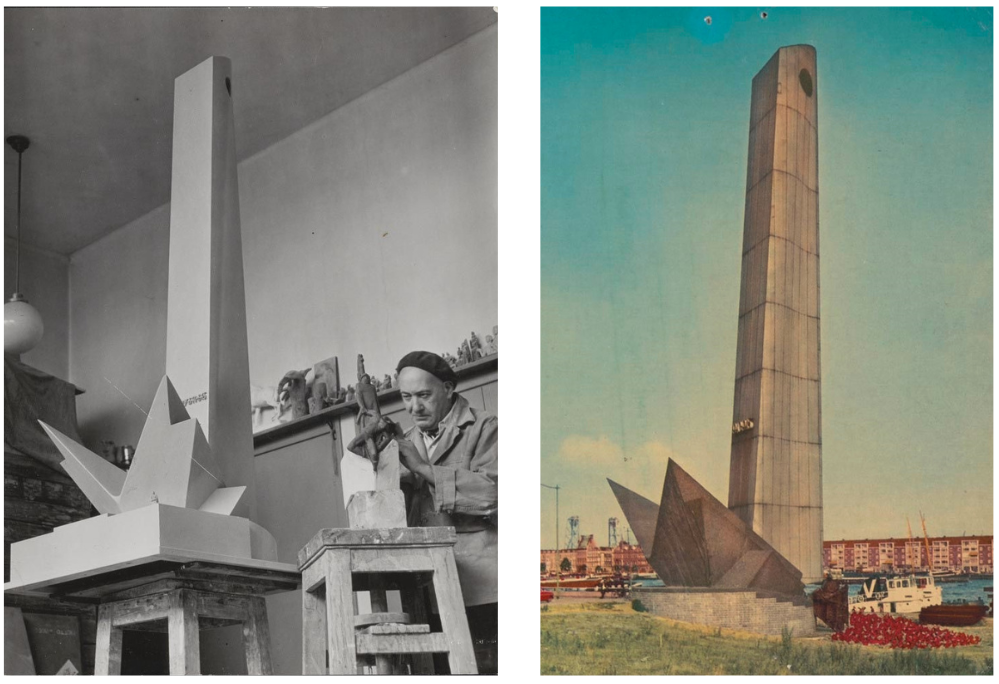RKD Talk: Fred Carasso and the long aftermath of fascism

On November 7, Matisse Huiskens will give an RKD Talk focusing on sculptor Fred Carasso. Huiskens obtained his doctorate with a dissertation on the artist in 2023. During his RKD Talk, he will discuss previously unstudied archival material to portray Carasso in a new way. Before and after the talk, there will be a chance to view the exhibition Memorials: Statues of liberation, which features materials from Carasso's archive.

'A fine craftsman'
On January 8, 1934, Federico Antonio Carasso (1899-1969) was interrogated at Amsterdam’s Aliens Police office. The report is kept at the RKD, among many other documents in Carasso's archive, and reveals that he was allowed to stay in the Netherlands for the time being. As a Communist who had been deported from both France and Belgium, however, he had a particularly undesirable profile. Nonetheless, he received the benefit of the doubt. The condition was that this ‘fine craftsman’ would refrain from participating in politics, focusing solely on creating sculptures.
Carasso's stay in the Netherlands proved fruitful. Twenty years later, he received the commission for De Boeg (‘The Prow’) (1956) after a tumultuous competition. The memorial is a 46-meter-high aluminium construction in Rotterdam's Leuvehaven, commemorating fallen merchant sailors. For Carasso, De Boeg not only constituted a monument or a milestone in his career, but he also ventured to share his more critical opinions in public shortly after this commission. While he had previously limited himself to making remarks in smaller circles, sometimes in Italian, Ossip Zadkine's De verwoeste stad (‘The Destroyed City’) (1953) became the subject of a scathing article. Why did he now want to criticise this monument, also created by a sculptor from abroad?

3. Anonymous, View of port Rotterdam with De Boeg, 1956, collection RKD
An in-depth exploration
The RKD Talk will illuminate the developments leading up to this article by discussing previously unstudied material from Carasso's archives. In the wake of his departure from Italy, shortly after the rise of Fascism in 1922, his nationality and the practice of sculpture in the Netherlands took on different meanings. The extensive oeuvre and substantial documentation enable an in-depth exploration into how this little-known but very active artist tried to hold on to his political ideals. This allows for a different understanding of the Dutch post-war context and invites us to reflect on the agency of emigrated artists.
The RKD Talk connects with the exhibition Memorials: Statues of liberation, which features material from the archives of sculptors Fred Carasso, Mari Andriessen, Charlotte van Pallandt and Willem Reijers.
Matisse Huiskens
Dr Matisse Huiskens is a researcher, critic, and lecturer in modern and contemporary art history at Utrecht University. In 2023, he received his doctorate for the dissertation Beyond Being an Italian Sculptor. The Exile of Fred Carasso in the Low Countries after the Rise of Fascism, 1928-1958. This project resulted in a joint doctorate at the University of Amsterdam and the University of Salerno in Italy.
In recent years, he has been a Research Fellow at the Royal Netherlands Institute in Rome (KNIR) and the Netherlands Interuniversity Institute for Art History (NIKI) in Florence. His current research focuses, among other things, on how newcomers from different parts of the world sought to establish their careers as artists in the Netherlands, Ireland, and Italy after the First World War.